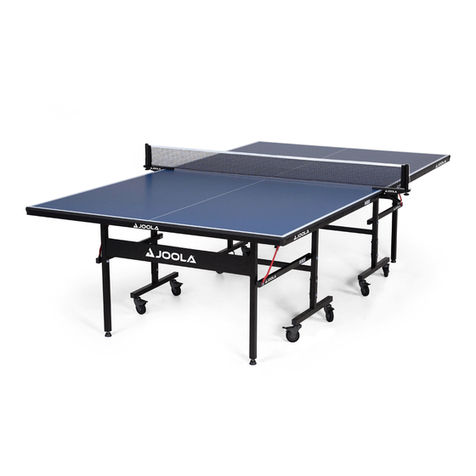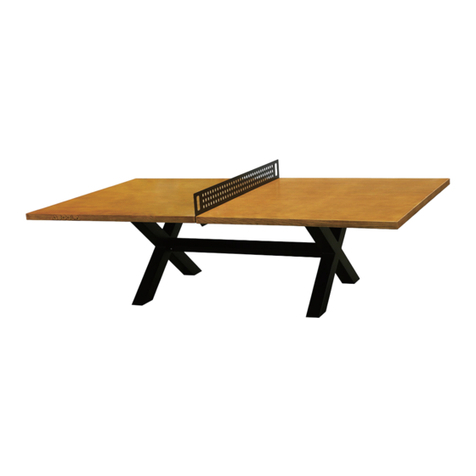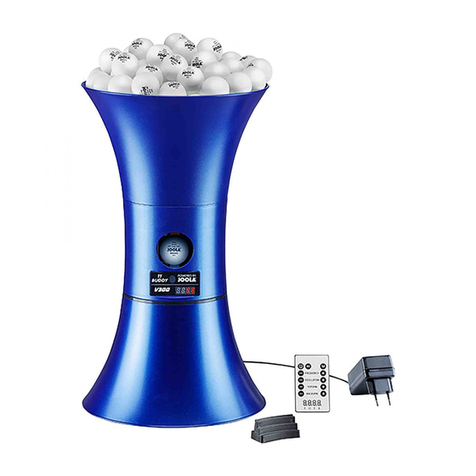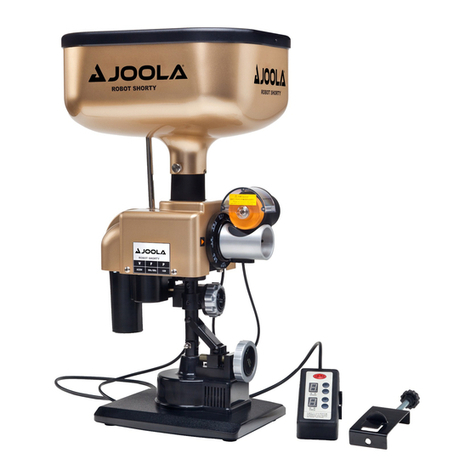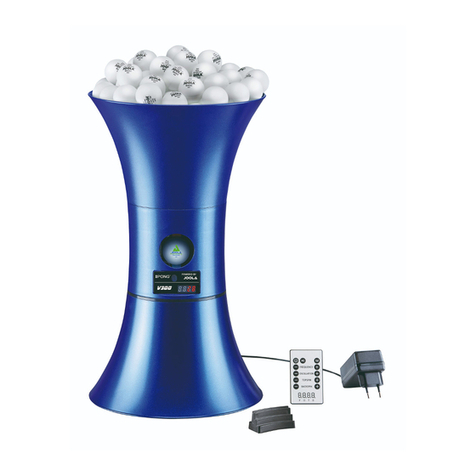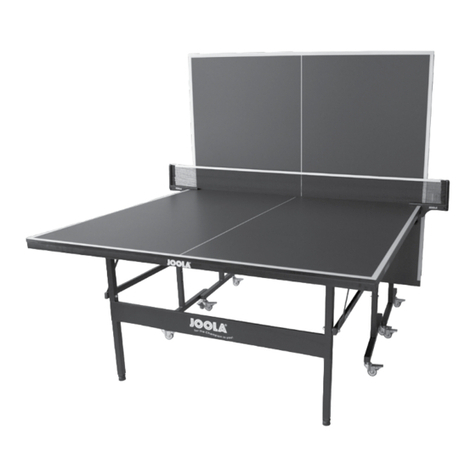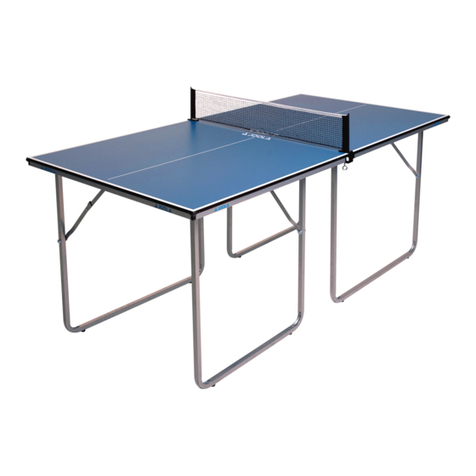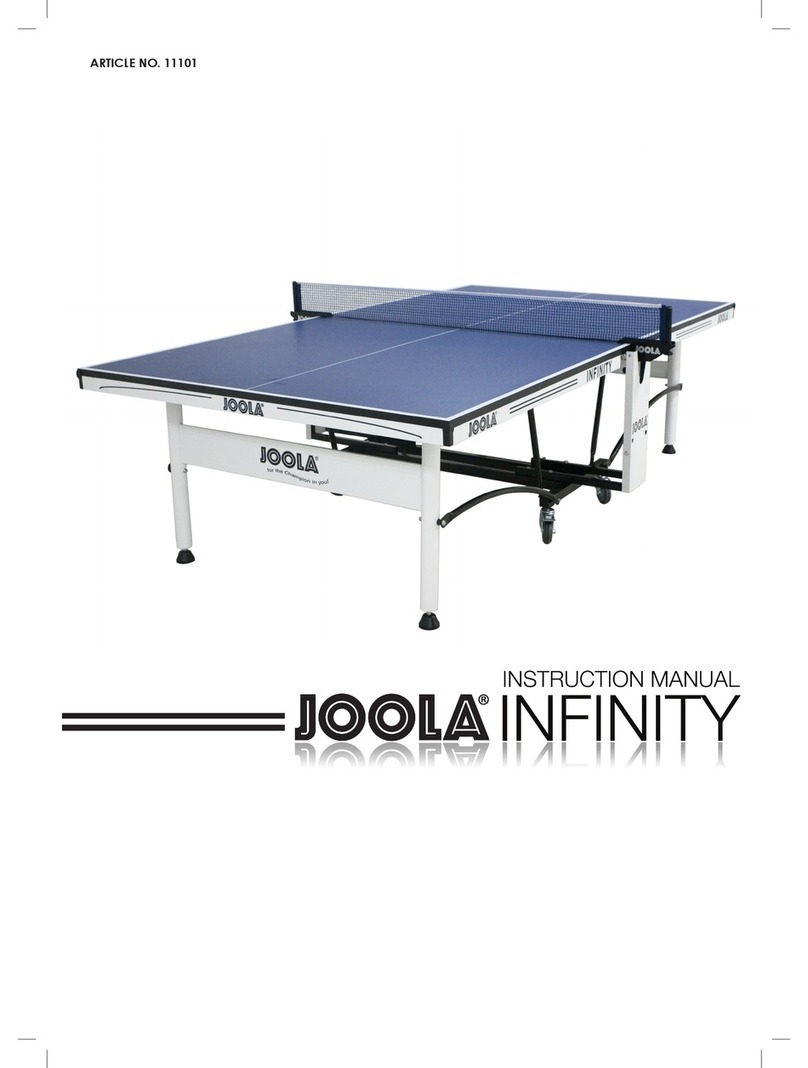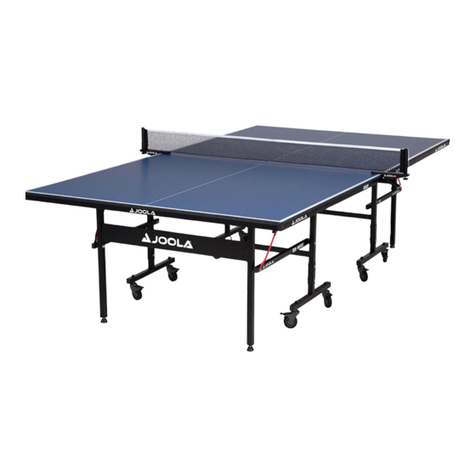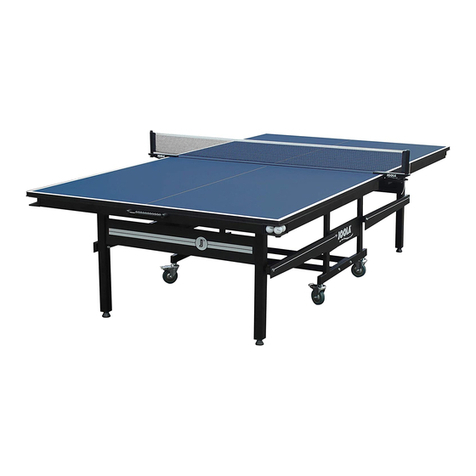Rally - the period during which the ball is in play.
In play - once the ball is intentionally projected in service.
Let - a rally, the result of which is not scored.
Point - a rally, the result of which is scored.
Racket hand - the hand holding the racket.
Strike - to touch the ball with the racket while carried in the racket
hand, or with the racket hand below the wrist.
Around the net - under or around the projection of the net and its
supports outside the table, but not between the end of the net and
post.
server and to his right of the center line.
server and to his left of the center line.
other side of the net from the server and to his left of the center line.
Obstruction – if the player himself or anything he wears or carries,
since last being struck by the opponent.
The Choice of Sides and Service:
decided by a toss. The winner of the toss may:
of sides.
Choose a side, and then the loser has the choice to serve or receive
-
Order of Play:
receiver makes a good return. Thereafter, server and receiver alter-
nate making good returns.
returns the ball. Then the partner of the server makes a good re-
turn, followed by the partner of the receiver returning the ball. This
process is repeated until the point is over.
Changing of Sides:
The players (or pairs, if in doubles), alternate sides after each game until the
end of the match. In the last possible game of a match, the players or pairs
Changing of Service:
In singles: After two points, the receiver becomes the server and so
on, until the end of the game or the score 10-10. From the score of
in turn until one players leads by two and ends the game.
In doubles:
the pair who has the right to serve and are received by the ap-
propriate partner of the opposing pair.
The second two services are delivered by the receiver of the
server.
two, and so on until the end of the game, or the score 10-10.
From the score 10-10 the sequence of serving and receiving are
the same, but each player delivers only one service in turn until
one player leads by two and ends the game.
the next game and so on, until the end of the match. In the last
possible game of a doubles match, the receiving pair changes
receiving is opposite to that in the immediately preceding game.
Service:
Service begins with the ball resting on the palm of the free hand, which must
strikes it before the ball touches anything else. At the moment of impact
of the racket on the ball, the ball must be behind the end of the line of the
line, and it cannot be hidden from the receiver.
court and pass directly over the net or around the net assembly,
half-court or center line. If, in attempting to serve, a player fails to
strike the ball while it is in play, the other team wins a point.
Return:
The ball, having been served or returned, must be struck so that it passes
directly or after touching the net assembly.
Serving or Receiving Out of Order:
If, by mistake, the players neglect to change ends when required,
play is interrupted as soon as the error is discovered and the players
change ends. If a game has been completed since the error, the
error is ignored.
If, by mistake, a player serves or receives out of turn, play is inter-
rupted and continues with that player serving or receiving who, ac-
cording to the sequence established at the beginning of the match,
should be server or receiver respectively at the score that has been
reached.
Ball is In-Play Until:
The ball is in play from the last moment at which it is stationary on the palm
A point is scored.
It touches the same side of the court twice, consecutively.
It has been volleyed.
It touches a player, or anything he wears or carries, other than his
racket or his racket hand below the wrist.
It is struck by a player, more than once, consecutively.
It is struck, in doubles, by a player out of sequence, except where
there has been a genuine error in player order.
A ball, which strikes the top edge of the table, is still in play. A ball that
strikes the side of the table below the edge, is out of play, so the play and the
point are counted against the last striker.
Let:
The rally is a let:
If the ball is served, and in passing over or around the net,
it touches the net or its supports, provided the service is
otherwise good or the ball is obstructed by the receiver or his
partner.
If a service is delivered when the receiver or his partner is not
ready. However, a player may not be considered unready if he
or his partner attempts to strike the ball.
If owing to an accident outside his control, a player fails to
make a good service or a good return or otherwise violates a
rule.
If it is interrupted for correction of an error in playing order.
Loss of a Point:
Unless the rally is a let, a player loses a point:
If he fails to make a good serve.
If he fails to make a good return.
If he volleys the ball.
If he strikes the ball with the side of the racket blade which has an
illegal surface.
If he, or anything he wears or carries, moves the playing surface
while the ball is in play.
If he, or anything he wears or carries, touches the ball in play before
it has passed over the end line or side line, not yet having touched
the playing surface on his side of the net since being struck by his
opponent.
If his free hand touches the playing surface while the ball is in play.
If he, or anything he wears or carries, touches the net or its supports
while the ball is in play.
If, in doubles, he strikes the ball out of proper sequence.
unless both players (or pairs) score 10 points. Then, the game is won by the
Playing a Match:
seven).
RULES OF THE GAME
